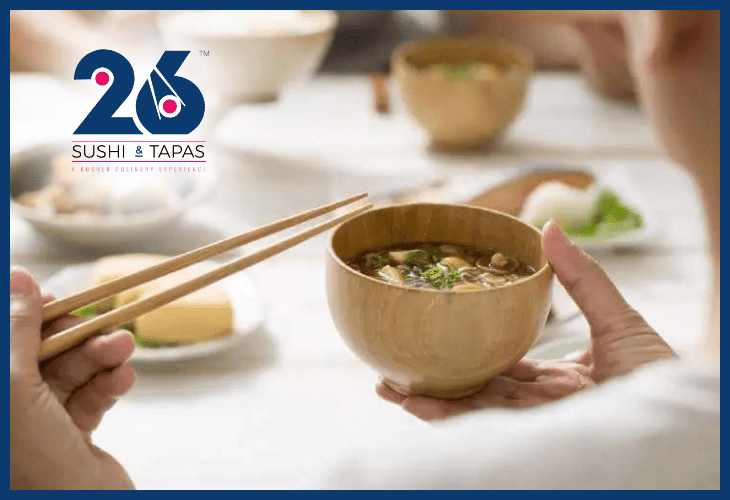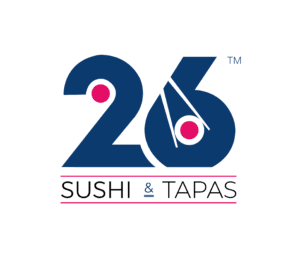Eating sushi is a cultural experience that has been around for centuries. One of the most iconic parts of this experience is mastering the use of chopsticks. Whether you’re a beginner or a pro, there’s always room to improve your chopstick skills. Check out our guide below.
No matter where you happen to be enjoying Asian food in the world, knowing how to eat with chopsticks correctly will come in handy.
Having a little knowledge of chopsticks etiquette and polite table manners goes a long way when enjoying a banquet or group meal in Asia.
You’ll catch on quickly — there’s no need to panic or suffer through the embarrassment of being the only one at the table to ask for a fork!
Top Tips
Don’t be intimidated by the sticks! The mechanics of using chopsticks the right way are simple; it’s just a matter of practicing until you become dexterous.
Once you get the hang of eating with chopsticks, you may find yourself looking forward to the next opportunity to improve.
Using chopsticks pleasantly forces us to slow down, choose deliberate bites, and ultimately enjoy a meal a little more than had we just “shoveled” it in with spoon or fork! Eating with chopsticks can be a slower, healthier, more mindful way to enjoy a meal.
The key to eating with chopsticks is simply to move only the top chopstick. The bottom stick is held stationary in your fingers while the top stick — controlled by your first two fingers and thumb — is moved to pinch bites of food. Hold the top stick much in the same way you would hold a pen or pencil.
Eating Tricky Food
Rice and chopsticks seem like a mismatch. Using chopsticks to eat certain foods sometimes seems inconvenient and impractical; however, there are polite workarounds. A scoop-shaped spoon will sometimes accompany dishes that are difficult to enjoy with chopsticks.
- Unless rice is prepared sticky enough, eating it with chopsticks is tedious. In Asia, it’s OK to lift your bowl to face level and push rice into your mouth. Eating like this is acceptable throughout Asia — with the exception of Korea. They prefer that bowls be left on the table. Chopsticks can be used together to shovel rice from your plate.
- Slurping soup and noodles — with deliberate noises, even — is acceptable throughout Asia. You can also drink directly from your soup bowl without using a spoon.
- Use your chopsticks to tear apart large chunks of food. Do not impale a big morsel of food as a way to lift it to your mouth. Spearing food is not good etiquette.
- If no serving utensils are provided at a communal or family-style meal, turn your chopsticks around to use the clean ends when transferring food from communal dishes onto your own plate. You usually won’t have to worry about doing this.
- In China, large pieces of food that cannot be broken apart (e.g., a fried chicken leg) should be lifted by the end with chopsticks and nibbled; avoid using your hands on food whenever possible. There are a few exceptions. Eating with the right hand is normal in Indonesia, Malaysia, India, and some countries.
Tip: With the exception of sashimi, most types of sushi — especially nigiri — are eaten with the fingers rather than chopsticks. Only use chopsticks when eating slices of raw fish.
Basic Etiquette

Now that you can successfully bring food from your plate to your mouth by using chopsticks, some basic etiquette will keep you from coming across as a complete newbie, or worse, grossing someone out at the table.
Rule #1: Remember that chopsticks are eating utensils, same as spoons, knives, and forks. You would never play drums on the table with two spoons, point at someone with a fork, or stab a knife vertically into a steak!
What NOT to Do
- Do not rub chopsticks together to remove splinters or wooden strings.
- Do not click your chopsticks together in the air for practice or on a bowl to make noises.
- Do not leave chopsticks standing in a bowl vertically; this symbolizes death in many Asian cultures.
- Do not grasp chopsticks in your hand with all five fingers wrapped around as you would a weapon.
- Do not use chopsticks to gesture while talking or to point at people or dishes. A common mistake is to use chopsticks to point at a particular dish you are requesting or recommending. No matter how delicious a dish, gesticulating with chopsticks while grunting with a mouthful of food is a serious faux pas.
- Do not pass food to people with your chopsticks — doing so resembles the practice of passing cremated bones between loved ones at funerals. You could really ruin someone’s dinner by conjuring up sad memories! Instead, put the piece of food you intend to share directly onto the other person’s plate.
- Do not suck sauce off the ends of your chopsticks. This rule especially applies when using disposable chopsticks that may have been bleached.
Tips for Advanced Etiquette
As usual, when traveling in Asia, locals understand that you may not know all their cultural caveats. You’ll usually be forgiven for mistakes unless you really cause a loss of face.
Watch what others are doing and follow their lead, particularly at formal banquets or when visiting someone’s home in Asia.
- When taking a break, place your chopsticks in a tidy fashion to the right of your plate, preferably with the tips on the provided rest. Try not to point them in anyone’s immediate direction. Watch out: Putting chopsticks on top of your bowl or plate indicates that you are finished and the staff may whisk it away!
- Particularly when eating in Japan, allow elders or senior members at the table to lift their chopsticks first.
- Don’t noticeably pick through dishes for specific ingredients that happen to be your favorite. This applies when dipping from communal bowls or when eating from your own plate. Just eat and enjoy!
- Avoid crossing your chopsticks into an “X” — it symbolizes death in some cultures. Always keep them held in eating position or tidy, side by side, next to your plate. Put down your chopsticks while waiting for the next dish or not eating.
- At the end of the meal, place any disposable chopsticks back into the paper wrapper, and leave them to the right of your plate.
- Koreans use spoons to eat soups and sometimes rice. Always put your chopsticks to the right side of your spoon when resting on the table; the reverse is done at memorial dinners for deceased loved ones.
An easy rule of thumb for chopsticks etiquette is simply to treat them as you would a fork and knife. Although more fun, they are eating utensils; don’t do anything with them you wouldn’t ordinarily do with a fork (e.g., play drums, twirl, point, etc…)
Which Chopsticks Are Best?
Wooden chopsticks are less slippery for beginners than the plastic or metal versions, making them somewhat easier to handle. But there’s a problem with snapping those wooden sticks apart every meal: The demand for disposable chopsticks far surpasses the ability to make them from wood scrap.
Don’t be fooled by the simplicity or small size — not all disposable chopsticks are made from scrap wood. An estimated 20 million mature trees are logged each year just to supply China with billions of throwaway chopsticks. That figure doesn’t include the rest of the world!
What’s worse, many disposable chopsticks are made using toxic chemicals (industrial bleaches to make them pretty) which can leach out into food.
Plastic and metal chopsticks, although a bit more slippery to use, are far better choices for traveling more responsibly.
Show off your chopstick skills at 26 Sushi & Tapas! Come dine with us and experience the art of sushi. Don’t worry if you’re a beginner — our friendly staff will be happy to assist you. Follow us on Instagram @26sushi_tapas to stay up to date on our menu specials and events, and order online or make reservations at 305-570-2626.
Reference: [https://www.tripsavvy.com/how-to-eat-with-chopsticks-1458377]


